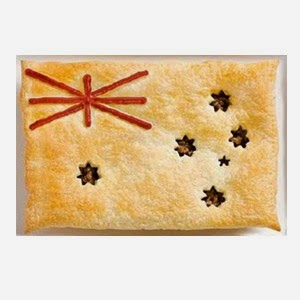How to Speak With an Australian Accent
Edited by Kudu, Maluniu, Teresa, I Love You and 46 others
While the "crocodile-hunter" accent is commonly associated with Australia, the every-day accent provides less of a dramatic emphasis when pronouncing words. So here is a how-to guide on cracking the average Aussie accent.
Steps
-
1Get the mentality behind the language. The most commonly mimicked Aussie accent is of a rough, messy, casual and animated style. The accent itself requires using your tongue, cheeks and lips to almost “chew” the words as you say them. As you continue on with this article, practice chewing the words until the example words soundAustralian.
-
2Focus on the vowels. These are the most important part of having a realistic Aussie accent. Words should always have the emphasis on the vowels (with few exceptions). All other parts of the sentence should almost be glossed over as far as learning the accent. In this case, the vowel will be listed, then the pronunciation (with sample American words to emphasise the sound) and then an example of how a word should sound in an Australian accent.
A sounds like “or” or “ayee” (AUtomatic or stAY) For example, Aussie sounds like “Or-zie” and mate sounds like “M-ayee-t”
E sounds like “e” without pronouncing the r (knEEling) For example, Need sounds like “Ner-ee-d”
I sounds like “ear” or “eye” (pIErce or mIght) For example, irresponsible sounds like “ear-re-spon-sbl” and Hide sounds like “H-eye-d”
O sounds like “ew” or “aw” (shOO or OUght) For example, shoot sounds like “sh-ew-t”
U sounds like “uh” (rOUgh) For example, suppose sounds like “sugh-p-oh-s” -
3Learn the end words. Often the accent cuts words short. The emphasis should never be on the end of the word unless it ends in a vowel.
Words ending in “ER” now end in “ah”. For example, “Together” sounds like “tuh-geth-ah”
Words ending in a “G” are cut off. For example, “Catching” sounds like “Cat-chn”
Words ending in an "E" are also cut off. For example, "Mate" sounds like "M-ayee-t." -
4The Stress is in the vowels. Stressing the vowels rather than certain words makes up a sentence. For example, “The Aussie language is pretty weird” becomes “Th-a oz-zie l-aye-nguage is pr-i-tty we-ee-rd.”
-
5The rhythm of speaking is different from the American accent in that sentences are said in one fluid motion. Think of the sentences you are saying them in cursive. Meaning, that the words are distinct but almost flowing into each other. The end of sentences are risen as if questions. For example, “The Aussie language is pretty weird” becomes “Tha oz-zie l-aye-nguage is pr-i-tty we-ee-rd.”
-
6Practice, practice, and then practice some more. Start by re-reading this entire article out-loud with the accent. Aussie accents have personality, so add a playful and happy tone when speaking. It makes the world of a difference.
























